Discover 20 hidden attractions, cool sights, and unusual things to do in Duluth (United States). Don't miss out on these must-see attractions: Enger Tower, Aerial Lift Bridge, and Lake Superior Railroad Museum. Also, be sure to include Lake Superior Maritime Visitor Center in your itinerary.
Below, you can find the list of the most amazing places you should visit in Duluth (Minnesota).
Table of Contents
Enger Tower
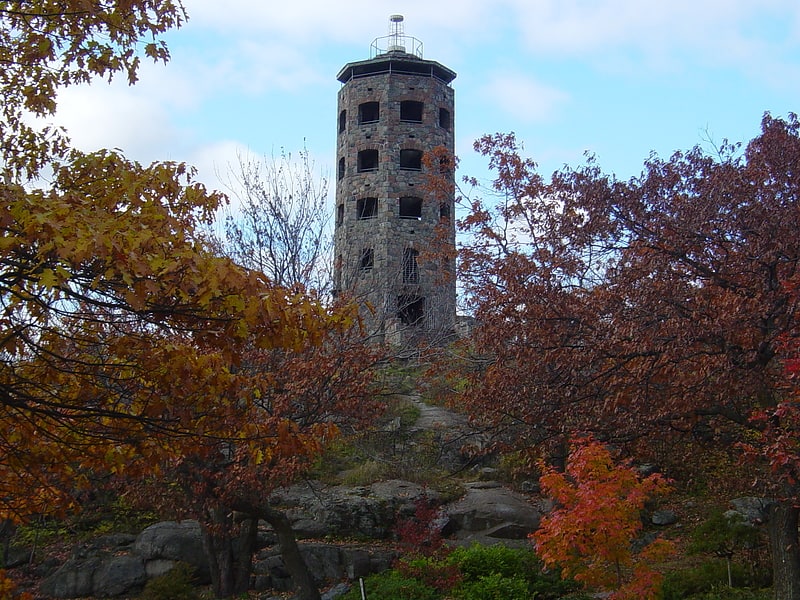
Tower in Duluth, Minnesota. Enger Tower is an 80-foot, five-story stone observation tower atop Enger Hill in Duluth, Minnesota.[1]
Address: 1 Enger Tower Dr, 55806 Duluth
Aerial Lift Bridge
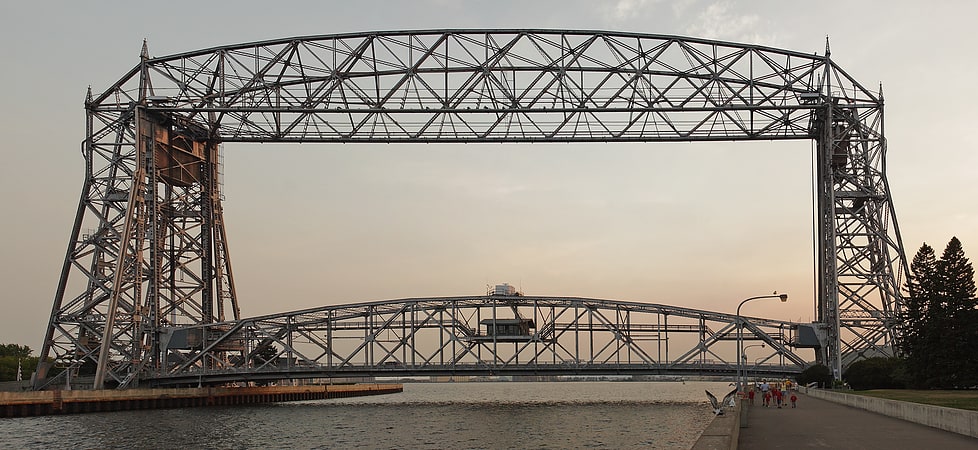
Iconic bridge lifts for water traffic. The Aerial Lift Bridge, earlier known as the Aerial Bridge or Aerial Ferry Bridge, is a landmark in the port city of Duluth, Minnesota. The span began life in 1905 as the United States' first transporter bridge: Only one other was ever constructed in the country, Sky Ride in Chicago. The span was converted in 1929–1930 to a vertical-lift bridge — also rather uncommon, although there are six such bridges along Ontario's Welland Canal — and continues to operate today. The bridge was added to the National Register of Historic Places on May 22, 1973. The bridge is owned and operated by the City of Duluth. The United States Army Corps of Engineers maintains a nearby maritime museum.[2]
Address: S Lake Ave, 55802 Duluth
Lake Superior Railroad Museum
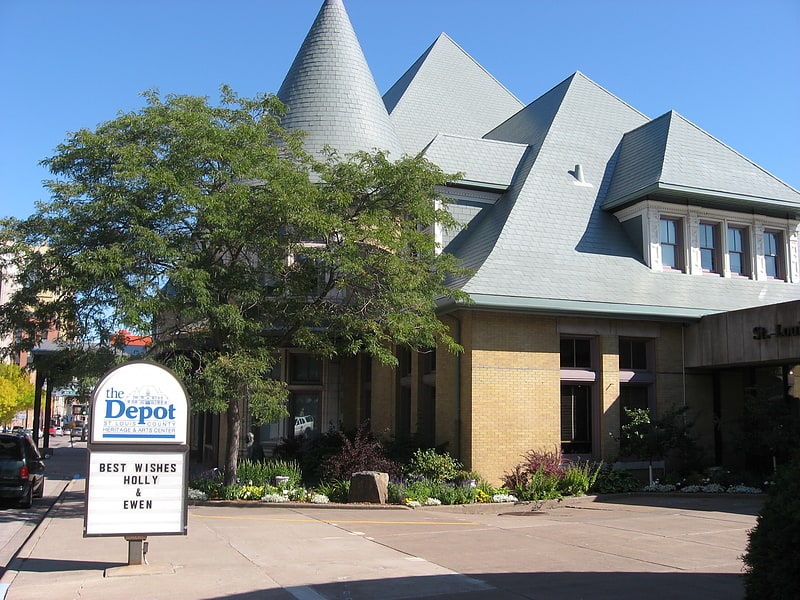
Museum in Duluth, Minnesota. The Lake Superior Railroad Museum is a railroad museum in Duluth, Minnesota, United States.
Opened in 1973, the museum focuses on railroading in the Lake Superior region. It is housed in the restored Duluth Union Depot complex.
The museum also operates the North Shore Scenic Railroad, which runs excursion trains from Memorial Day through mid-October using historic rail equipment from the museum collection.
The collection includes the William Crooks, which became the first locomotive to operate in the state of Minnesota in 1861, and Duluth, Missabe and Iron Range Railway Number 227, a 2-8-8-4 "Yellowstone" locomotive that was among the largest steam engines to operate.
Several museum spaces are available for rent as an event venue.[3]
Address: 506 W Michigan St, 55802-1533 Duluth
Lake Superior Maritime Visitor Center
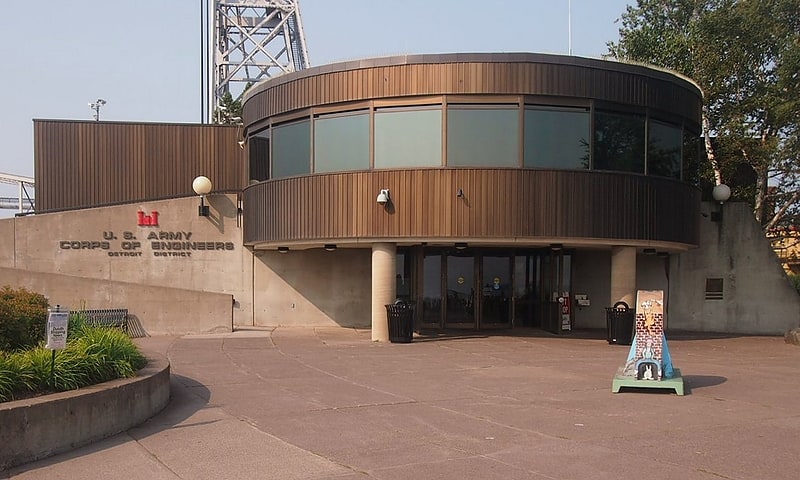
Museum in Duluth, Minnesota. The Lake Superior Maritime Visitor Center is a museum in Duluth, Minnesota, operated by the United States Army Corps of Engineers. The museum is in Duluth's Canal Park near the Aerial Lift Bridge and overlooks the entrance to the Duluth-Superior harbor.
The museum and grounds are all property of the U.S. federal government. All visitors are welcome to visit this museum without paying. Donations are accepted by the Lake Superior Marine Museum Association, and support general maintenance and upkeep of the building, new exhibit development and acquisition, and staffing.
Exhibits demonstrate the history and operations of upper Great Lakes commercial shipping and the Aerial Lift Bridge. Many visitors particularly enjoy the three historically accurate replica cabins and a pilothouse from typical ships which plowed the waves of Lake Superior in years past. A three-story steam engine, 50 scale models and many interactive displays are available for visitors to explore.
Thousand-foot-long freighters pass within 200 feet (61 m) of the building, underneath the Aerial Lift Bridge, which lifts up to allow them to pass through.
This museum is open. Visit www.lsmma.com for current hours.[4]
Address: 600 Canal Park Dr, 55802 Duluth
AMSOIL Arena

Arena in Duluth, Minnesota. AMSOIL Arena is a multipurpose arena in Duluth, Minnesota, home to the UMD Men's and UMD Women's hockey teams. It opened in 2010, replacing the Duluth Entertainment Convention Center Arena on the waterfront near Duluth's landmark Aerial Lift Bridge.
Naming rights for 20 years were purchased by AMSOIL, a corporation based in Superior, Wisconsin, for $6 million, one-third up front.
The facility cost nearly $80 million; about half ($38 million) paid by the State of Minnesota through a 2008 bond bill, another 27% (about $21.6 million) by a voter-approved city food-and-beverage tax increase, 12% (about $9.6 million) by UMD, and the last 11% (about $8.8 million) by the DECC. Construction ran from September 2008 to December 2010, and included a 475-space parking garage with a skywalk connecting it to the arena.
The first event held at the arena was on December 30, 2010. UMD men's hockey team lost 0–5 to North Dakota before a crowd of 6,764, tied for the team's highest home attendance that season.
In their first season in the arena, the UMD men's hockey team won the NCAA Men's Ice Hockey Championship. In 2012, the arena hosted the 2012 NCAA Division I Women's Ice Hockey Tournament, in which Minnesota beat Wisconsin, 4–2.
The arena's attendance record was set on June 20, 2018 during a President Donald Trump rally, which drew 8,372 people. The attendance record for a sporting event was set on January 25, 2020, when UMD men's hockey team lost to their rival, North Dakota, 2–3 in front of 7,711 fans.[5]
Address: 350 Harbor Dr, 55802 Duluth
Glensheen Historic Estate

1908 mansion and gardens with tours. Glensheen, the Historic Congdon Estate is a 20,000 square foot mansion in Duluth, Minnesota, United States, operated by the University of Minnesota Duluth as a historic house museum. Glensheen sits on 12 acres of waterfront property on Lake Superior, has 39 rooms and is built in the Jacobean architectural tradition, inspired by the Beaux-Arts styles of the era. The mansion was constructed as the family home of Chester Adgate Congdon. The building was designed by Minnesota architect Clarence H. Johnston Sr. with interiors designed by William A. French Co. and the formal terraced garden and English style landscape designed by the Charles Wellford Leavitt firm out of New York. Construction began in 1905 and completed in 1908. The home cost a total of $854,000, equivalent to more than $22 million in 2017. The home is a crowning example of design and craftmanship of the Midwest in the early 20th century.[6]
Address: 3300 London Rd, 55804-2010 Duluth
Fitger's Brewhouse Brewery and Grille
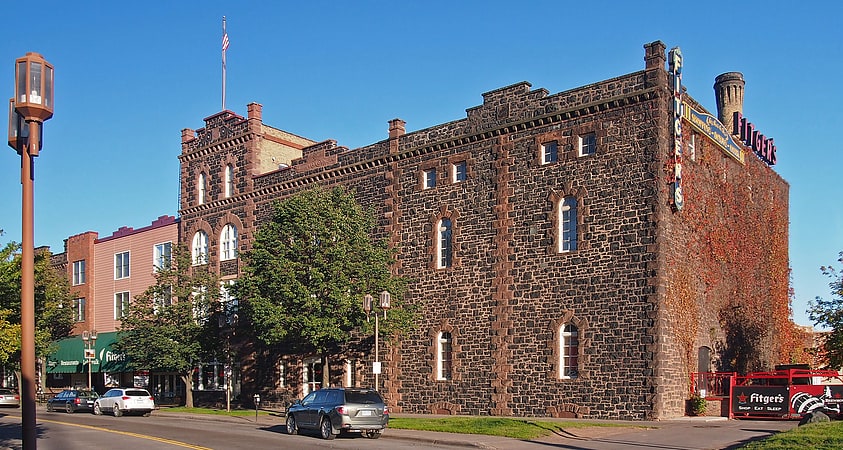
Building. Fitger's Brewing Company was a beer manufacturer in Duluth, Minnesota, United States, from 1881 to 1972. The surviving brewery complex stretches for 720 feet along the Lake Superior shoreline and East Superior Street, one of Duluth's main roads. The majority of the ten-building complex was constructed between 1886 and 1911. Fitger's, as it is now known, has undergone adaptive reuse as an indoor mall with shops, restaurants, nightclubs, a hotel, and a museum on the brewery's history.
Fitger's Brewing Company grew directly out of a brewery established in 1859, making it the first commercial brewery at the head of Lake Superior and the oldest continuously operating brewery in the state of Minnesota until going out of business in 1972. Fitger's was a major local employer, producing 100,000 barrels of beer annually. It stayed open during Prohibition by diversifying into soda and candy bar production.[7]
Address: 600 E Superior St, 55802 Duluth (East End)
Lake Superior Zoo

Zoo in Duluth, Minnesota. The Lake Superior Zoo, previously known as the Duluth Zoo, is an Association of Zoos and Aquariums accredited zoo in Duluth, Minnesota.[8]
Address: 7210 Fremont St, 55807-1854 Duluth
Great Lakes Aquarium

Aquarium with interactive exhibits. The Great Lakes Aquarium opened in 2000 and is located on the Duluth waterfront. A 501 private nonprofit, Great Lakes Aquarium features animals and habitats found within the Great Lakes basin and other freshwater ecosystems such as the Amazon River. The Aquarium houses 205 different species of fish, birds, reptiles, amphibians and mammals. It is one of few aquariums in the United States that focuses predominantly on freshwater exhibits.
Many of the main exhibits at 62,000-square-foot (5,800 m2) Great Lakes Aquarium (GLA) are based upon actual habitats in the Lake Superior basin. "Slices" of the Saint Louis River, Baptism River, Pictured Rocks National Lakeshore, Kakagon Slough, Isle Royale and Otter Cove can all be viewed up close.[9]
Address: 353 Harbor Dr, 55802-2639 Duluth
Jay Cooke State Park
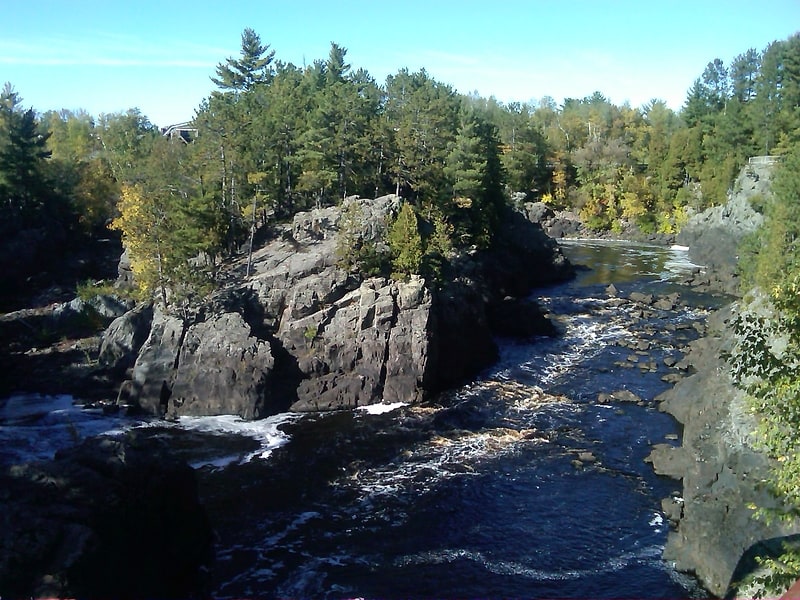
State park in Minnesota. Jay Cooke State Park is a state park of Minnesota, United States, protecting the lower reaches of the Saint Louis River. The park is located about 10 miles southwest of Duluth and is one of the ten most visited state parks in Minnesota. The western half of the park contains part of a rocky, 13-mile gorge. This was a major barrier to Native Americans and early Europeans traveling by canoe, which they bypassed with the challenging Grand Portage of the St. Louis River. The river was a vital link connecting the Mississippi waterways to the west with the Great Lakes to the east.
Today Minnesota State Highway 210 runs through Jay Cooke State Park. The 9 miles (14 km) of the route between Carlton and Highway 23—which include the park—are designated the Rushing Rapids Parkway, a state scenic byway.
The park is named for Pennsylvania financier Jay Cooke, who had developed a nearby power plant, which is still in use. The Grand Portage trail and three districts of 1930s park structures are listed on the National Register of Historic Places.[10]
Adventure Zone

Amusement park, Theme park, Arcade
Address: 329 S Lake Ave, 55802 Duluth
Tweed Museum of Art
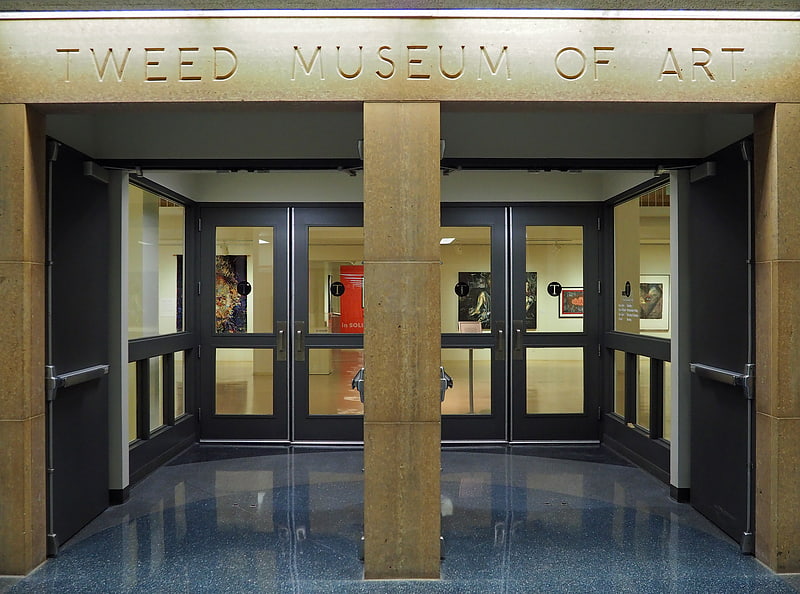
Museum in Duluth, Minnesota. The Tweed Museum of Art is a museum on the campus of the University of Minnesota Duluth, in Duluth, Minnesota, United States.
The Tweed Museum of Art was established in 1950 when Alice Tweed Tuohy, widow of George P. Tweed, donated their house and an approximately 500-piece American and European art collection to the University of Minnesota Duluth (UMD) to enrich the lives of the people in the academic and civic communities of the region. Following its initial operation out of the Tweed home from 1950 to 1958, a museum facility was constructed on the UMD campus in 1958, with funds donated primarily by Mrs. Tweed and her daughter, Bernice Brickson. The museum has been expanded and renovated four times between 1965 and 2008.
Today, the museum operates in a 33,000-square-foot (3,100 m2) facility with 15,000 square feet (1,400 m2) of exhibit space, and offers nine galleries to service an average of 33,000 visitors each year. Of artistic, cultural, regional and historical significance, the collection is the focus of all museum activities. It contains 15th–21st-century European, American and world art in all media by artists of regional, national and international importance, including outstanding work by artists from the Upper Midwest and Minnesota. Artists in the collection include Thomas Hart Benton, Charles Biederman, Frederick Childe Hassam, Anna Hyatt Huntington, Jean-François Millet, Robert Motherwell, Robert Priseman, John Henry Twachtman and Helen Turner. The Tweed contains the largest collection of paintings by the American landscape artist Gilbert Munger.
The collection also features painting and illustrations about the Royal Canadian Mounted Police that were donated by the Potlatch Corp. including works by Arnold Friberg.
In 2007, the museum acquired the Richard E. and Dorothy Rawlings Nelson Collection of American Indian Art, an acquisition that opened new programmatic territories. By establishing a modestly comprehensive historical canon, the Nelson collection opened the museum to build upon it by collecting contemporary (particularly Woodland) American Indian arts.
Beyond its region's borders, Tweed enjoys relationships with museums around the world. Artwork circulates from the Tweed collection both nationally and internationally. Recent world exhibitions featuring artwork from Tweed's collection have taken place at the Smithsonian's National Museum of the American Indian, at the Prado in Madrid, at the Complesso del Vittoriano in Rome, and at prefectural museums throughout Japan.[11]
Address: 1201 Ordean Ct, 55812 Duluth
North Shore Scenic Railroad
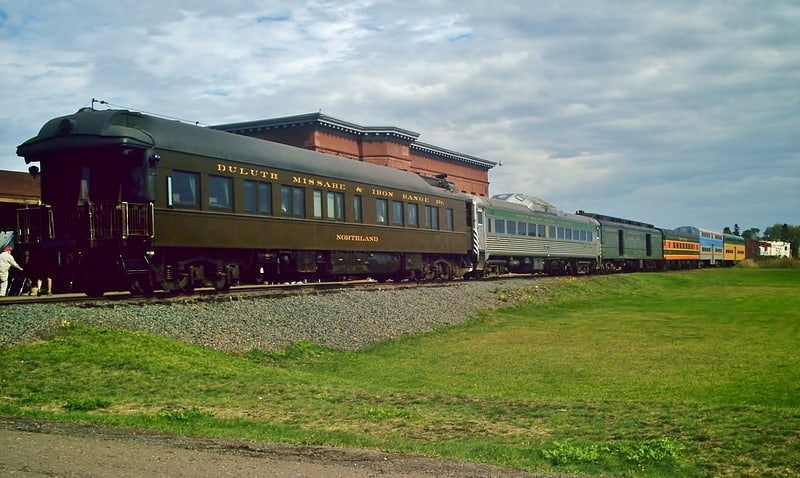
Museum in Duluth, Minnesota. The North Shore Scenic Railroad is a heritage railroad that operates between Duluth and Two Harbors, Minnesota, United States, along 28 miles of the Lakefront Line, once part of the Duluth, Missabe and Iron Range Railroad.
Owned by the Lake Superior Railroad Museum, the NSSR operates out of the former Duluth Union Depot, now the St. Louis County Depot. Ridership hit 110,000 in 2018, the railroad's record.[12]
Address: 506 W Michigan St, Duluth
Sacred Heart Cathedral
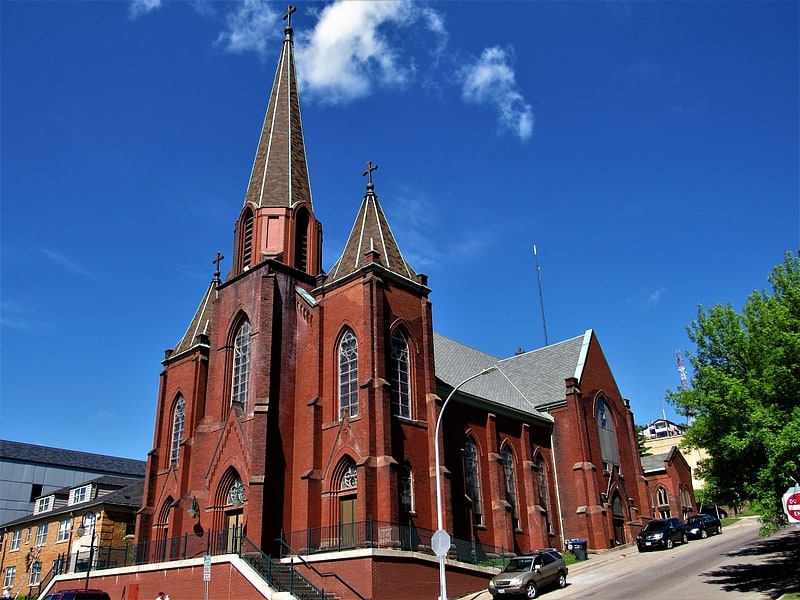
Building. Sacred Heart Cathedral, Sacred Heart School and Christian Brothers Home comprise a former Roman Catholic diocesan complex in the Central Hillside neighborhood of Duluth, Minnesota, United States. Sacred Heart Cathedral was built from 1894 to 1896 and served as the seat of the Roman Catholic Diocese of Duluth until 1957, after which it became a parish church. Sacred Heart School was built in 1904 and the Christian Brothers Home—a monastic residence for the school faculty—was built in 1907.
In 1985 the diocese merged the parish into another and sold off the Sacred Heart buildings. The cathedral is now the Sacred Heart Music Center, a performance and event venue. The school has been repurposed as the Damiano Center, an ecumenical provider of social services. The monastery is now Alicia's Place, which offers Section 8 housing for homeless women.
The cathedral and school were listed on the National Register of Historic Places in 1986. In 2005 the listing was expanded to include the Christian Brothers Home. The complex was listed for its state-level significance in the themes of architecture and religion. It was nominated for its exemplary Late Gothic Revival cathedral designed by local architect Gearhard A. Tenbusch and for representing the historical seat of authority of the Diocese of Duluth and its educational efforts.[13]
DeWitt-Seitz Marketplace
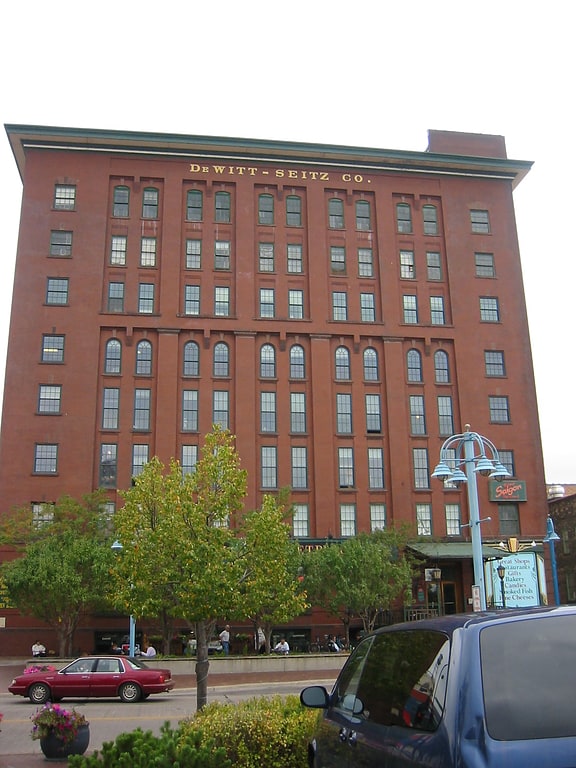
The DeWitt–Seitz Building is a historic commercial building in the Canal Park neighborhood of Duluth, Minnesota, United States. The eight-story building was constructed in 1909 for the DeWitt–Seitz Company, a furniture jobber and mattress manufacturer. It was listed on the National Register of Historic Places for its local significance in the themes of architecture, commerce, and industry. It was nominated for its status as a rare surviving example of the manufacturing and jobbing factories that once populated Duluth's early-20th-century waterfront, and for its exemplary Chicago School architecture.
In 1985 the building became the DeWitt–Seitz Marketplace, a mixed-use commercial building with shops and restaurants on the lower floors and office spaces above.[14]
Address: 394 S Lake Ave, 55802-2325 Duluth
Duluth Depot
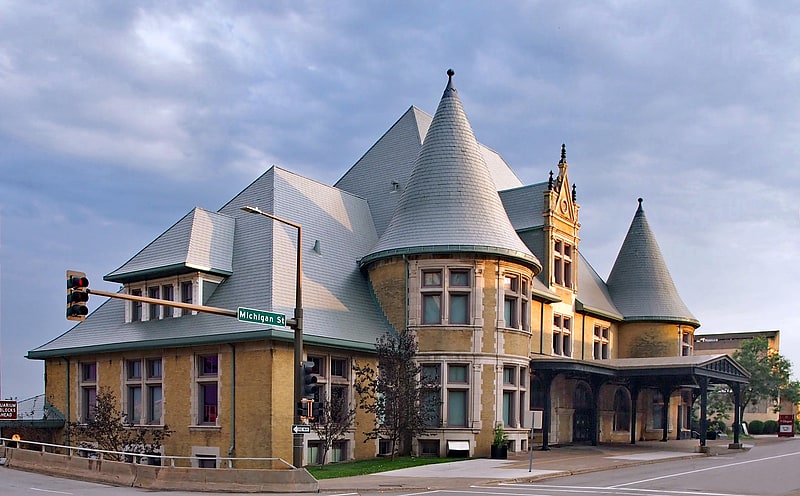
Art institute in Duluth, Minnesota. The St. Louis County Depot is a historic train station in Duluth, Minnesota, United States. It was built as a union station in 1892, serving seven railroads at its peak. Rail service ceased in 1969 and the building was threatened with demolition until it reopened in 1973 as The Depot St. Louis County Heritage & Arts Center. Train service also resumed from 1974 to 1985, by Amtrak.
Today, the building houses three exhibiting museums (the Duluth Art Institute, Lake Superior Railroad Museum, and St. Louis County Historical Society Museum), two performing arts organizations (Duluth Playhouse and Minnesota Ballet), and serves as the departure point for the North Shore Scenic Railroad.[15]
Downtown Duluth

The Downtown of Duluth, Minnesota, United States, is situated between Mesaba Avenue and 4th Avenue East; and located on Michigan, Superior, First, Second, and Third Streets.
As in most cities, the downtown area is home to a number of the city's cultural and social attractions, as well as government offices and business centers. Duluth's main library is located in downtown, as is the city's foremost museum, the courthouse, city hall, several local restaurants and bars with live music venues, and many of the larger business offices. Stores and places to eat and drink tend to be locally or regionally owned and operated, with most chain and franchise establishments having located (or re-located) themselves in the "Miller Hill area" around the U.S. Highway 53 corridor. A large portion of the eastern section of downtown is oriented around Essentia Health–St. Mary's Medical Center and Miller-Dwan Medical Center.
The downtown area is easily accessible from Interstate Highway 35. Most of the downtown is within walking distance of the touristy Canal Park district.
Five blocks along Superior Street and seven blocks along 1st Street West have been designated the Duluth Commercial Historic District, with 87 contributing properties built between 1872 and 1929. It was listed as a historic district on the National Register of Historic Places in 2006 for its state-level significance in the themes of architecture and commerce. It was nominated for representing Duluth's commercial development and popular architectural styles at the turn of the 20th century.[16]
John A. Blatnik Bridge
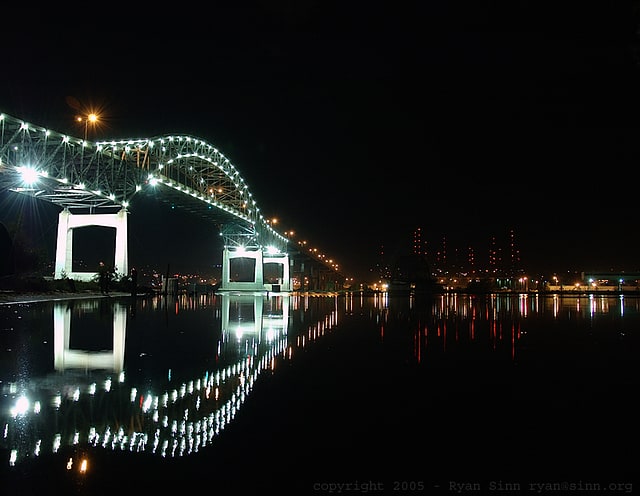
Arch bridge. The John A. Blatnik Bridge is the bridge that carries Interstate 535 and U.S. Highway 53 over the Saint Louis River, a tributary of Lake Superior, between Duluth, Minnesota, and Superior, Wisconsin. The bridge is 7,975 feet long and rises up nearly 120 feet above the water to accommodate the seaway shipping channel. It was dedicated on December 2, 1961, but was renamed for Congressman John Blatnik on September 24, 1971, to commemorate Blatnik's role in making the bridge a reality. The Blatnik Bridge replaced a swinging toll bridge around the same location that carried both automobile and rail traffic.
The bridge was widened and the substructure was strengthened between 1992 and 1993 to accommodate hard shoulders. The Blatnik Bridge was reduced to two lanes temporarily in 2008, after it was discovered in a bridge inspection that the 1990s upgrades to the Blatnik Bridge had added weight beyond the load limit for gusset plates in eight different locations. This was similar to the gusset plates that caused the I-35W Bridge in Minneapolis to collapse on August 1, 2007. The Blatnik Bridge was reduced to two lanes temporarily until the gusset plates could be strengthened.
In November 2011, both the Minnesota and Wisconsin departments of transportation installed new signs to remind drivers that trucks over 40 short tons (36 t) gross vehicle weight cannot use the Blatnik Bridge; these vehicles will be rerouted to the nearby Bong Bridge. According to the press release, permitted, overweight vehicles have been restricted from using the Blatnik Bridge since early 2008 when inspections showed that corrosion and time were starting to affect the structure. Transportation officials say that the bridge is aging and restriction of overweight vehicles will help to extend the life of the bridge. Drivers who disregard the posted weight limits will be ticketed.
The Blatnik Bridge is one of two connecting Duluth and Superior, the other being the Richard I. Bong Memorial Bridge, a tied-arch bridge upriver from the Blatnik Bridge. The Bong Bridge carries U.S. Highway 2 (US 2) over the St. Louis Bay.[17]
Lester River Bridge
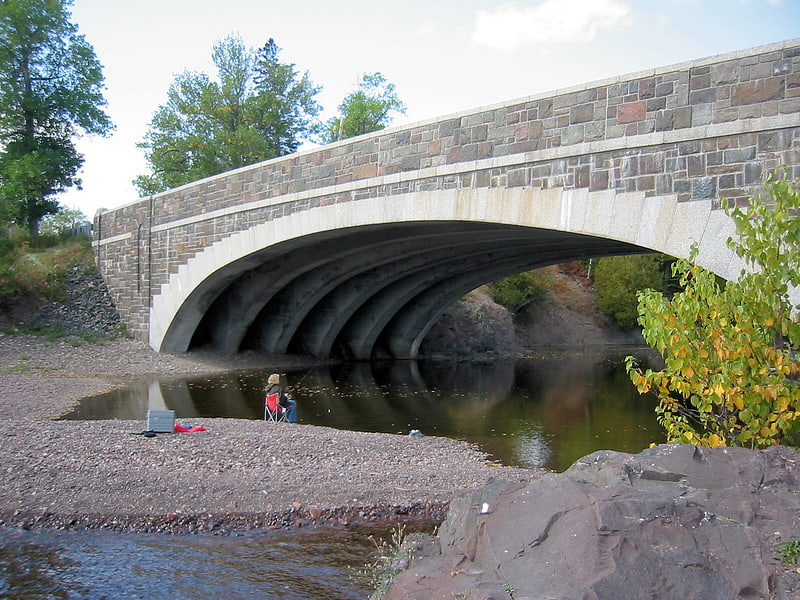
The Lester River Bridge is a historic road bridge carrying Minnesota State Highway 61 over the Lester River in Duluth, Minnesota, United States. Structurally it is a reinforced concrete arch bridge with decorative stone facing. It was built from 1924 to 1925. In 2002 the bridge was listed as Lester River Bridge–Bridge No. 5772 on the National Register of Historic Places for its state-level significance in the themes of architecture, engineering, and transportation. It was nominated for its Neoclassical architecture, impressive 103.5-foot span, and association with the opening of the highway along the scenic North Shore of Lake Superior.[18]
SS William A. Irvin
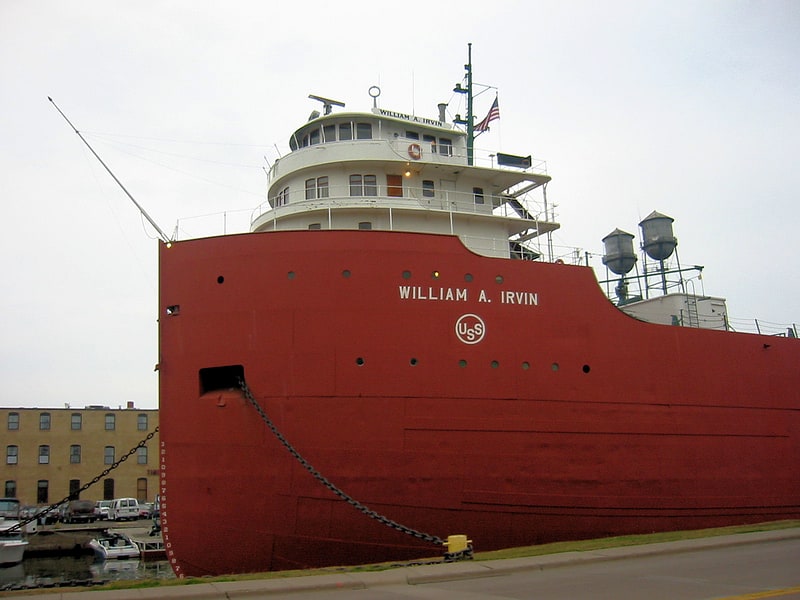
Museum in Duluth, Minnesota. SS William A. Irvin is a lake freighter, named for William A. Irvin, that sailed as a bulk freighter on the Great Lakes as part US Steel's lake fleet. She was flagship of the company fleet from her launch in the depths of the Great Depression in 1938 until 1975 and then was a general workhorse of the fleet until her retirement in 1978.
The ship was refurbished and is moored at Duluth, Minnesota, as a museum ship. SS William A. Irvin is a well-maintained example of a classic laker, and a prime example of a straight decker, as she has no self-unloading system.
The ship was listed on the National Register of Historic Places in 1989 for her state-level significance in the themes of engineering, maritime history, and transportation. She was nominated for her role in Great Lakes maritime commerce and for her innovative design features.
The ship has a race named in her honor. Each year since 1994 during the Grandma's Marathon weekend, nearly 2,000 runners compete in the William A. Irvin 5K, which begins and ends at the iconic red hull of the ship.[19]
Address: 350 Harbor Dr, 55802-2600 Duluth